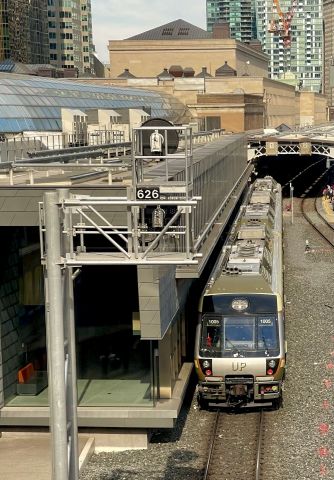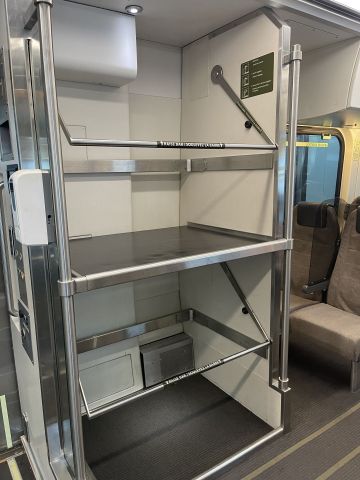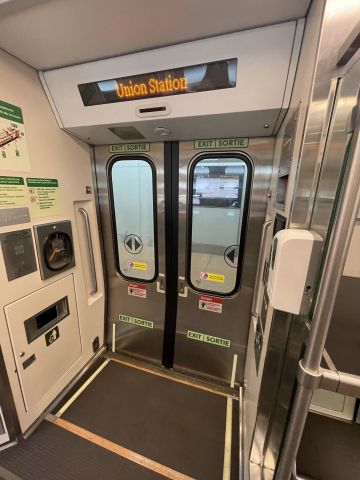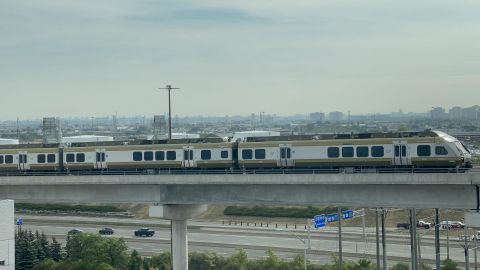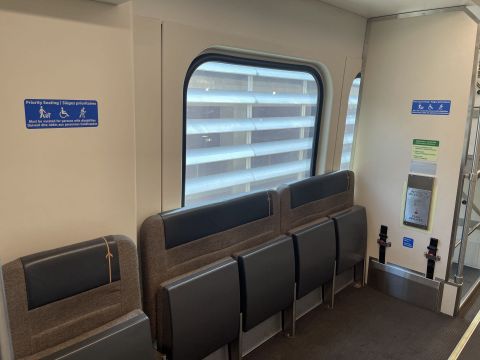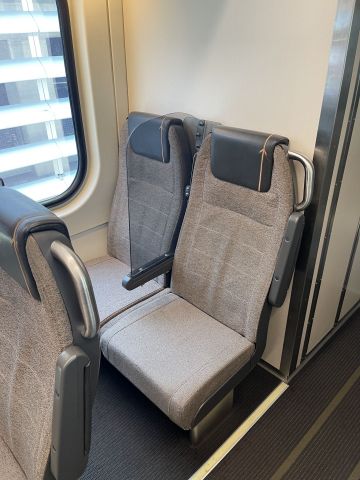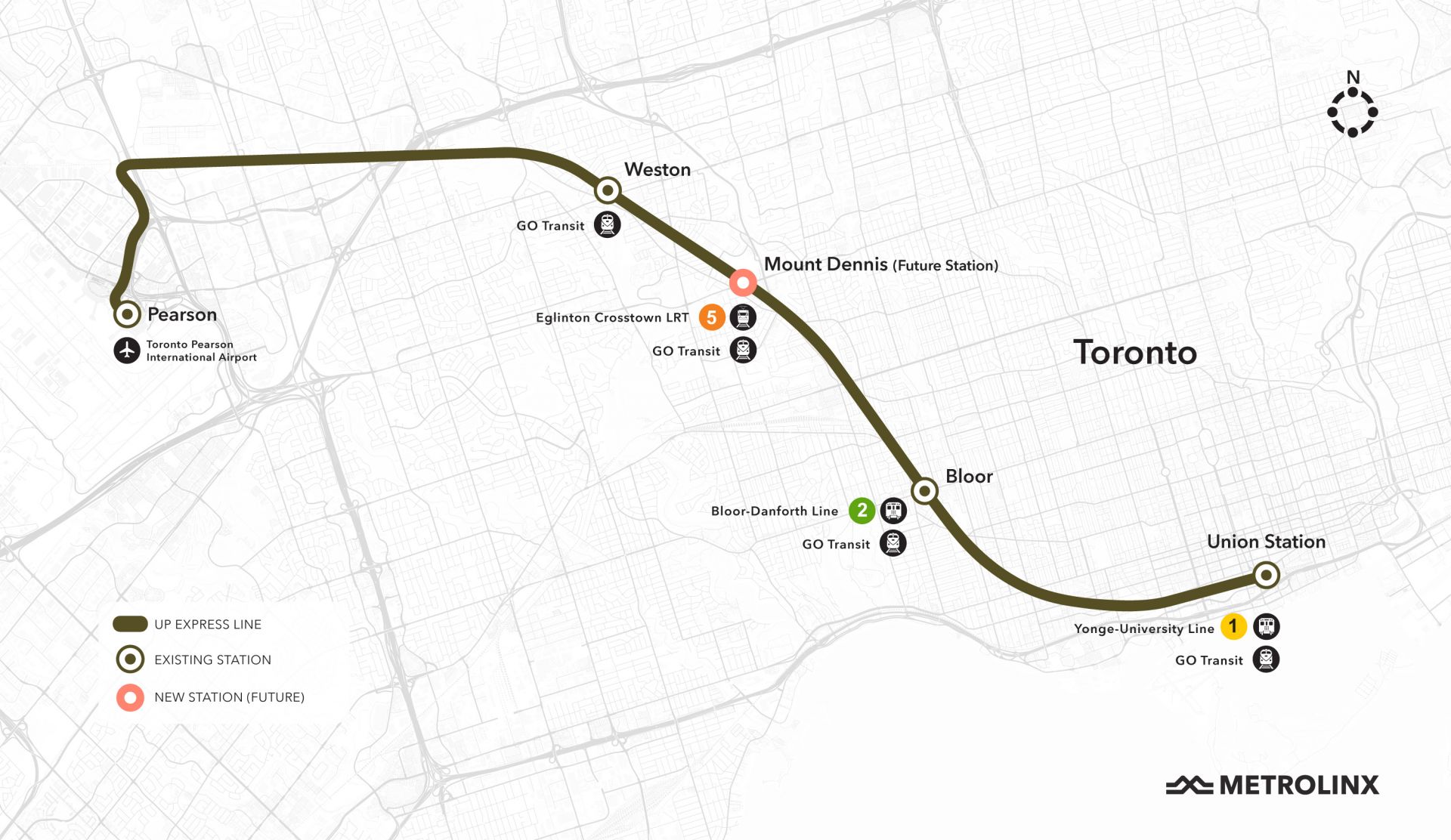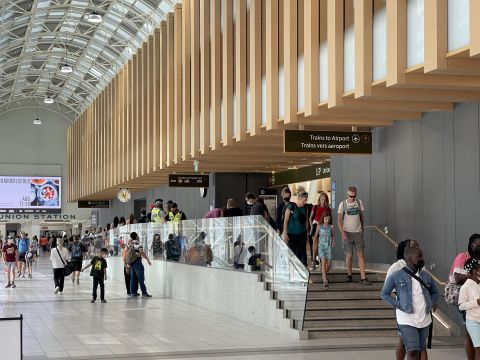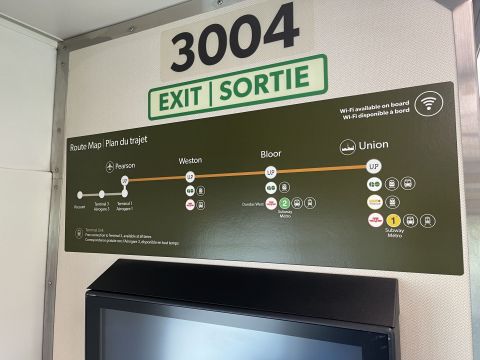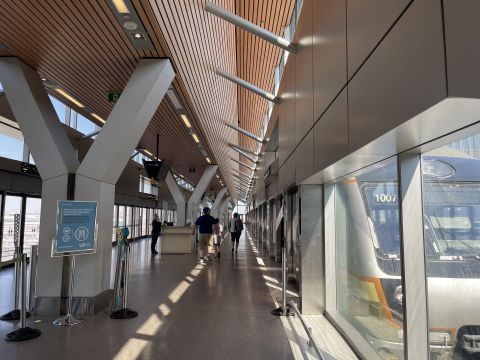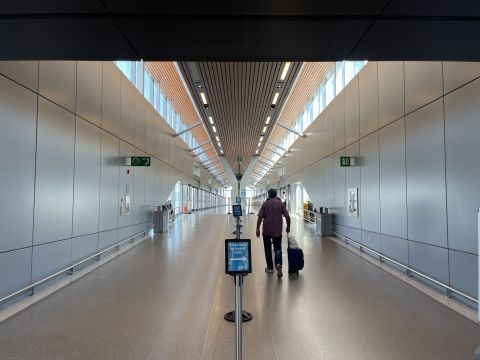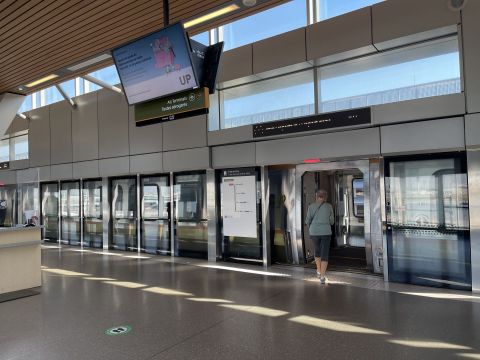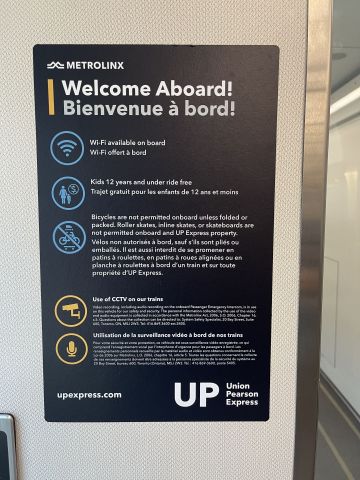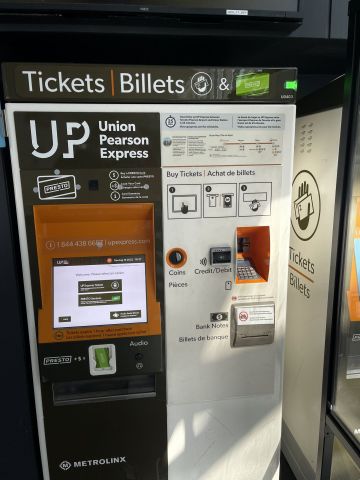Union Pearson Express
The Union Pearson Express (often stylized as UP Express, sometimes referred to as UPX) is a rail link between Terminal 1 at Pearson International Airport (YYZ) and downtown Toronto at Union Station. Travel times on the UP express are just under 25 minutes, compared to over an hour using other means.
As the number of passengers steadily increased at Toronto Pearson in the 1980s, studies were done in the early 90s to study what a potential rail link between Downtown Toronto and the Airport could look like. Two options were retained, either an extension of Line 2 towards the Airport, or to connect through the Georgetown Subdivision (now the GO Kitchener Subdivision). The latter was seen as more realistic due to its lower cost of construction and easier implementation.
In 2001, Transport Canada launched the procurement for a private operator to design, build, operate and finance such a link. Blue 22, the proposal by SNC-Lavalin, was retained in Fall 2003. At the time, the plan was to build a spur between Terminal 1 (adjacent to the LINK station being planned and built at the time) up north to the Highway 427 underpass and connect to an expanded Georgetown subdivision. Blue 22 would operate using refurbished Budd Rail Diesel Cars (RDC) to be bought from VIA Rail. The venture ultimately failed as SNC failed to secure the necessary funds for the line to be constructed, as private lenders doubted the business case. The project also faced considerable pressure from the local communities over the decision not to electrify the line, as well as the added noise from its construction. In 2008, Metrolinx and SNC would get into discussions about the future of the project, producing a joint Environmental Assesment. While the line was expected to open in 2008, no work had been done at that point.
In 2010, negotiations ultimately failed between the two parties, as "market conditions were unfavourable" to resolve the financial issues. Metrolinx then became the owner and operator of the project, taking full control over the project. At the same time, work started on the Georgetown Subdivision to allow for additional tracks to be built, new stations and grade seperation in various parts of the alignment.
Following its procurement, work started in 2011 on the UP Express stations and the Airport spur. Construction was done by AirLinx Transit Partners on behalf of Metrolinx. Metrolinx estimates that the line cost 456 millions to build.
Service started on June 6, 2015, in time for Toronto's hosting of the Pan American games in July 2015.
Rolling Stock
UP Express operates using Nippon Sharryo DMUs in three-car trainsets. 18 cars were ordered, making for 6 total trains. Two types of cars, 12 end cars and 6 centre cars, were ordered.
The vehicles were acquired as an additional order to the Sonoma Marin Area Rail Transit order. There are very few variations between the trains from both orders, other than the overhead luggage bins, a requirement by Transport Canada at the time. The type is unique in Canada and is not used on any other rail service.
The vehicles are EPA Tier 4 compliant and, should UP be electrified, can be converted to electric operation (rough-ins for OCS are already found on the Pearson Spur). Each train-set features a UP Express livery, free Wi-FI, tray tables at every seat, accessible bathroom, luggage racks, passenger information displays and power outlets throughout.
As the trains do not turn around, seats are facing both directions of travel. Passenger capacity is 173 seated passengers in a three-car consist.
Route and Stations
UPX operates between Union Station and Pearson International Airport using the Kitchener Line. Once the train reaches the 427 highway underpass, trains go onto the Pearson subdivision which is an elevated guideway to reach Pearson International Airport and avoid existing infrastructure. The tracks use standard gauge throughout with way-side signalling.
While Bloor and Weston are platforms at expanded GO stations, Union Station and Pearson were purpose-built for UPX service and, as such, are fully-enclosed structures. Their interior design was done by Hosoya Scahefer, with some of those elements also fond at Weston and Bloor. The livery, branding and identity of the line was developed by Winkreative.
Platform screen doors are installed at Pearson and Union Station stations to avoid track incursions, while overhead displays indicate the time of the next departure.
At Union Station, a coffee shop (operated by Balzac's) and a lounge (UPstairs, affiliated with CIBC as of January 2023) can be found within the UPX station.
All stations have free wi-fi, ticket vending machines and fare validators.
Four stops are found on the line:
- Union Station: Downtown station and terminus for UPX. The station is located within the Skywalk, further west from the existing platforms.
- Bloor: Part of Bloor GO Station, a short walk away from Dundas West station on TTC's Line 2 and local bus routes.
- Weston: Part of Weston GO Station, connects to GO Transit and local bus routes.
- Pearson: Located within the Terminal LINK station at Terminal 1 and the parkade.
Once construction is complete at Mount Dennis, a new station will open and connect with the Eglington Crosstown and other local bus routes.
Fares and Service Structure
When UPX opened in 2015, it was the most expensive airport link in North America with fares up to 27.50$ per trip, depending on the payment method. The price was set to allow for operational costs and the construction of the line to be recovered over its lifecycle. Even before the line opened, projections indicated that the fares would deter a large number of users, making the business case highly optimistic. UP Express was highly criticized for its business model in the 2012 Auditor General report on Metrolinx. This is in addition to existence of the TTC Airport Express, which connects Pearson and Kipling. While the trip takes twice as long, it costs only a TTC fare and allows for onward travel throughout the GTA.
Following lackluster ridership figures, with less than 10% load during most of its operation, and the lack of popularity of the new service, fares were reduced in March 2016, with the introduction of GO fares between Bloor, Weston and Union Station, making it an alternative to the regular GO trains on the Kitchener Line, and a 12$ one-way fare between downtown and the Airport. The reduction in fares made it considerably more attractive to most users.
A side effect of the GO fares between stops is that it increased commuter demand for the line: with trains every 15 minutes, all-week, commuters have more options for the same fare as taking the GO Kitchener trains that only run on weekdays. A large part of the current ridership of the line comes from those users, with the train being full on many trips. While the line is currently subsidized by the Metrolinx, as are other rail services, it is unknown how much of a subsidy is needed per passenger.
Fares are enforced on an honour system where passengers must be able to provide proof of payment if they are asked for one. Payment methods are the following: Presto, Presto Contactless, ticket machine in the station and advanced online purchase. To pay the lowest fare, passengers are encouraged to use either of the Presto options and must tap in and out of the train using the Presto readers at all stations. Failure to do so results in the highest applicable fare on the route.
As of August 2022, children under the age of 12 do not need to pay a fare. Discounted fares are available depending on passengers, as well as special fares exclusive to UP Express (long-layover, meet and greet, family, etc.).
Before the onset of the COVID-19 pandemic, trains were every 15 minutes, from 5AM to 1AM every day. Train frequency is, for most of the day, back to 15 minutes, with some periods where trains are every 30 minutes.
For the most recent schedule, fares and service information, visit theUnion Pearson Express website.
The futre of the line is particularly unclear. Estimates from 2019 suggest that the line will be over-capacity by 2028. It is expected that UPX will be integrated in the electrified GO network, becoming a branch of the Kitchener Line, with increased frequency and number of stops. More details should become available in the coming years as the ON-Corridor works progress throughout the GO Trains network.



